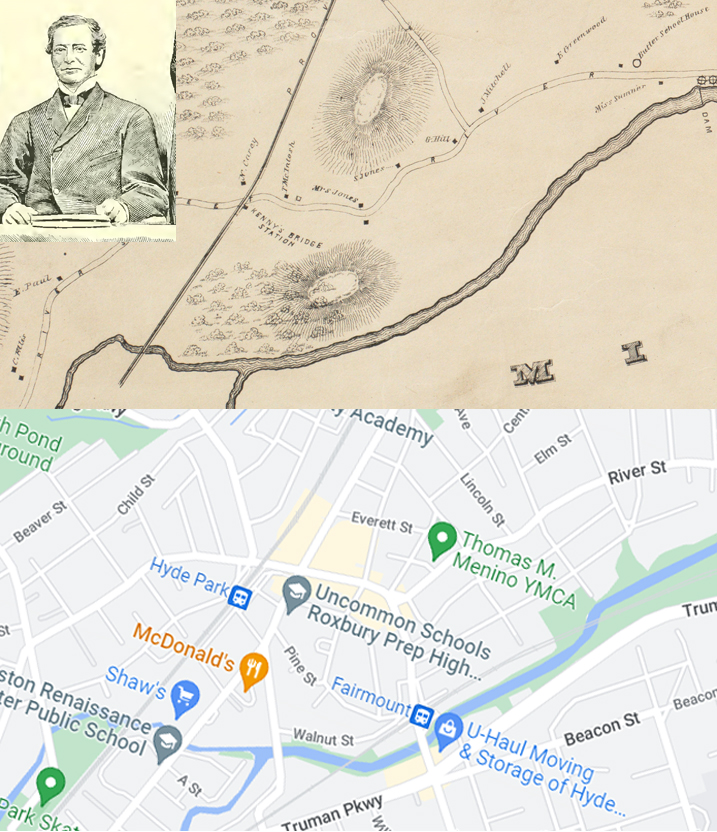
Dorchester Illustration 2567 Why is Hyde Park not part of Dorchester?
The 1850 map of Dorchester clearly shows the section of Hyde Park north of the Neponset River as part of Dorcchester. In 1846, Henry Grew began buying land in the area and built a house there.
Henry Grew (1808-1892) wasborn in Boston on 30 May 1808, the son of John Grew and Anne Greene Grew. He was a student at Phillips Academy in Andover, Mass., leaving school at age 16 to work in the store of dry-goods importer James Read. He began his own wholesale dry-goods business in Boston in 1830 under the name Chace and Grew, and although he retired from active business in 1845, remained a partner in the dry-goods businesses Grew and Perkins and Perkins, Doe, and Company. In 1847, he purchased several acres of land and built a house he named “Woodlands” in Hyde Park (then Dorchester). The estate grew to several hundred acres and contained an active farm, part of which was later incorporated into Stony Brook Reservation. Source: Massachusetts Historical Society
Henry Grew said on March 9, 1872, “Having purchased a few acres of land in the summer’ of 1846, I commenced building a house, and moved to this place, then a part of Dorchester, on the first day of May, 1847. At that time most of this territory was occupied by farmers. There were on River Street (the old highway between Dorchester and Dedham), within a range of a mile or a mile and a half, about ten houses, most of them small and occupied by farmers, with two exceptions, one a blacksmith and one a wheelwright, with a population not exceeding fifty persons.” Memorial Sketch of Hyde Park, Mass. (Boston, 1888), 12.
The town of Hyde Park was created on April 22, 1868, from sections of land in Dorchester, Dedham and Milton. The Dorchester land was the western portion of Dorchester shown in the detail from the 1850 map of Dorchester. Hyde Park was annexed to the City of Boston in 1912. The street that meanders across the illustration horizontally is River Street.
Camp Meigs and the U.S. Army Hospital site appear to have been part of Dorchester during the Civil War, prior to the creation of Hyde Park. During the Civil War, Readville supported three Massachusetts training camps and a large U.S. Army General Hospital. Best known as Camp Meigs, nearly 30,000 men in 55 military units prepared here for battle, including three of the Union’s earliest black regiments. The 54th Regiment, composed of men of African descent, led by Col. Robert Gould Shaw trained there.
